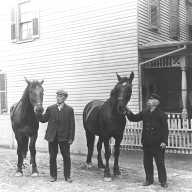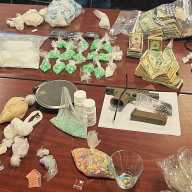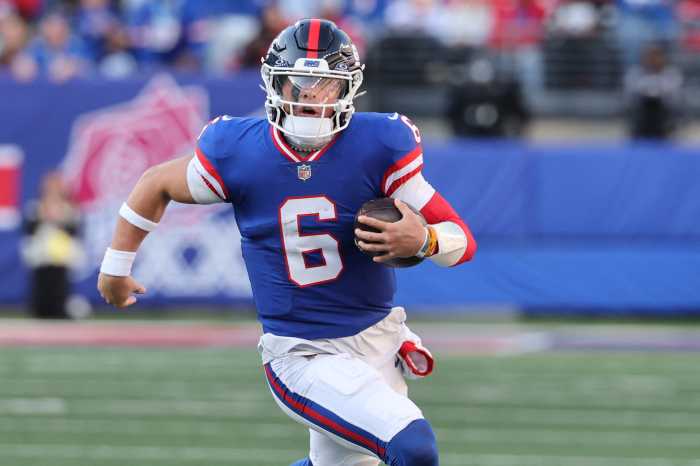Two weeks before the start of the French Open this past June, newly married and semi-retired pro Mary Joe Fernandez was wandering through a South Florida shopping mall when she spotted a familiar face coming toward her. Somewhat stunned, she stopped and greeted a grinning Serena Williams, who was out on an earnest spending spree.
"The fact that she was in Miami instead of warming up somewhere in Europe, that pretty much told me that not only was Serena not playing the French Open, but that she probably wasn’t thinking much about tennis at all at that moment," Fernandez said at the time.
That the defending US Open champion Williams, and her Wimbledon-winning sister Venus, missed a combined eight-and-a-half months of tournament tennis earlier in 2000 due to injuries, hardly seems to matter one iota as they enter Flushing Meadows this year. What the two young women proved at Wimbledonwith the two of them facing off in an unprecedented semifinal between sisters and then Venus going on to claim the title over defending champ Lindsay Davenportis that their talent and athleticism are so overwhelming at this stage that even with minimal preparation, they can win on any surface and on any day.
Earlier this season, when Venus was plagued by tendinitis in both wrists, her father proclaimed that she was considering retirementart school in lieu of pro tennis. Serena, who dropped out of a clay court tournament at Amelia Island, Florida, in April with a knee injury and didn’t surface until Wimbledon, was said to be studying fashion design. Their father always has been one to hedge his bets. Problem is, neither of his daughters ever said she was thinking of quitting the sport. In fact, at one point during the French Open, when Venus was asked about her imminent retirement, the 20-year-old simply flashed a stratospheric smile, rolled her eyes and said, "Oh, that’s just daddy talking."
Venus and Serena, who turns 19 on September 26th, have been known to talk up their own talents as well, but now their racket work has finally caught up with their mouths. To win last year’s US Open and become the first African-American Grand Slam winner since Althea Gibson back in the 1950s, Serena beat three of the top four seedsNo. 4 Monica Seles, No. 2 Davenport and No. 1 Martina Hingisin succession. To capture Wimbledon, Venus needed to knock off world No. 1 Hingis, her sister (unarguably her most feared opponent) and defending champ Davenport, all within the span of five days. With each sister healthy, and with both now possessing the Grand Slam title she covets most, the way they approach this year’s US Open should be very interesting.
"The good thing for Venus and Serena is that the pressure is now off," said 1978 US Open finalist Pam Shriver. "They’ve already shown that they both can win the majors. Now I would hope that they could both just take a deep sigh of relief and relax. Of course, it could be frightening to think of them playing even better because they don’t feel any pressure anymore."
"The Williams sisters have proven that you don’t need to be a member of a rich country club to learn to play tennis," said six-time US Open champ Chris Evert, herself the product of a public parks program led by her father, Jimmy. "They’ve shown that no matter the color of your skin or how rich you are, you can become a success. They’re role models and they can change tennis, just like Tiger Woods has done in golf."
Of course, there is no certainty that the Williams’ will cruise through New York’s Open field. They have not yet fulfilled their father’s prophesy that they become the Nos. 1 and 2 ranked players in the world. That honor still belongs to Davenport and Hingis, who between them have combined for eight majors in the last four years.
Davenport, who turned the tennis world on its side by losing 30 pounds and then winning her first Grand Slam at the ’98 US Open, captured the Australian Open this past January (to add to her ’99 Wimbledon title). She then reached three consecutive hard court finalsScottsdale, in which she and Hingis never got to play the championship match because of two straight days of rain; Indian Wells, in which she defeated Hingis after being down a set and 2-4; and Miami, where she lost to Hingis 6-3 6-2. Along the way, Davenport re-took No. 1 in the world, even adding the top doubles ranking to her rsum as well.
It’s hard to believe that Hingis has not won a major championship since the ’99 Australian Open. After all, in 1997 she was just one match away from winning tennis’ first Grand Slam since Steffi Graf in 1988 (Hingis lost the French Open final to her good friend, Iva Majoli). She did reach the finals at Roland Garros and Flushing Meadows last year and this year she was runner-up to Davenport at the Australian Open, a semifinalist at the French to eventual champ Mary Pierce, and a quarterfinal victim of Venus Williams at Wimbledon. She also has won Tokyo, Miami and Hamburg and likely enters the US Open more determined than ever to avenge last year’s final-round loss and to prove to the tennis community that her craft and guile on court can compensate for the barrage of power she faces from the bigger women on tour.
"Hingis is always a threat at any event she plays," Shriver said. "Unlike other players, her peaks and valleys are only a slight wave, instead of ‘the perfect storm.’ And she’s so clever. She reminds me of Chrissie [Evert] going up against the more athletic Martina [Navratilova]. People may write her off, but she’s always going to find a way to make herself better and to win big matches."
There is one former US Open winner who could very possibly see a return to glory this year. Monica Seles, who won the Open in 1991 and ’92 before being taken from the game due to the fateful back-stabbing in April of ’93, has spent the last six months rededicating herself to fitness, along the way setting an achievable goal of dropping 25 pounds by the US Open. She even hired fitness trainer Bobby Kersee (husband of Olympic track and field great Jackie Joyner-Kersee) to aid her in her quest. Though Seles lost to Davenport in the Wimbledon quarterfinals 6-0 in the third set, she continues to serve notice that her drive and determination are unwavering. She also has, perhaps, some of the sweetest Flushing Meadows memories of any active player on the women’s tour.
Monica Seles would like nothing more than to recreate some of the previous magic at this year’s US Open. So would Martina Hingis. And Lindsay Davenport. And Venus and Serena Williams. When Venus Williams won Wimbledon last month, she took the microphone and told the world that it had been her lifelong dream to win the coveted grass court title but that so many mornings she had awakened feeling like she was living a nightmare, one that now she would never again have to face.
Somewhere out on the tour is another young woman for whom a US Open title would provide the very same experience.





























